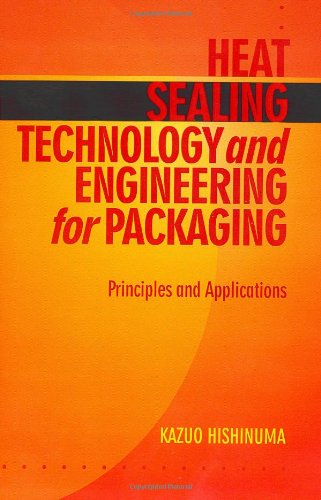

Most ebook files are in PDF format, so you can easily read them using various software such as Foxit Reader or directly on the Google Chrome browser.
Some ebook files are released by publishers in other formats such as .awz, .mobi, .epub, .fb2, etc. You may need to install specific software to read these formats on mobile/PC, such as Calibre.
Please read the tutorial at this link: https://ebookbell.com/faq
We offer FREE conversion to the popular formats you request; however, this may take some time. Therefore, right after payment, please email us, and we will try to provide the service as quickly as possible.
For some exceptional file formats or broken links (if any), please refrain from opening any disputes. Instead, email us first, and we will try to assist within a maximum of 6 hours.
EbookBell Team

4.1
90 reviews1. History and Function of Heat Sealing Technology · Development of Heat Sealing Technology · History of Improvement for Heat Sealing of Thermoplastic Thermoplastics · Maintenance Function of Packaged Product Quality using Heat Sealing · Features of Heat Sealing · Problems of Over Heating for Sealing · Approach of Rationalized Heat Sealing · References 2. The Chemistry of Heat Sealing · Utilization of the Thermoplasticity of Polymer Materials · Adhesion in Heat Sealing · Features of Thermoplastic Polymer Materials for Packaging Applications using Heat Sealing · References 3. The Fundamentals of Heating for Heat Sealing · Aspects of the Responses of the Melting Surface Temperature during Heat Sealing · Strategies for Efficient Heat Sealing · Features and Selected Applications of Heating Methods · Problems with Conventional Evaluation Methods for Heat Sealing · References 4. Fundamentals of Heat Sealing Operation · Melting Surface Temperature as the Fundamental Control Factor in Heat Sealing · Measuring Method for Temperature of Melting Surface: The "MTMS" · Measuring the Melting Properties of Each Film Material and Determining a Lower-Limit Temperature · References 5. Factors in Heat Sealing Failure · Adequate or Inadequate Heating · Thermal Stresses that Cause Packaging Failure · Causes of Crinkles · Controlling Overheating as a Solution for Heat Sealing Failure 6. Making the Conventional Heat Sealing Method More Efficient · Introduction · Measuring the Temperature Response of Each Heat-Seal Portion in Quadruple-Layered Films · Relation between Applied Pressure and the Temperature of the Melting Surface for Heat Sealing · Measurement of the Melting Surface Temperature for Heat Sealing with Films Containing Volatile Components · Effects on Heat Sealing Operations of Teflon Sheet Attached to the Heating Block Surface · Measurement of Surface Temperature Distributions on the Heating Block · Problem Analysis in Single-Side Heating · Other Factors Affecting Temperature Distributions and Radiant Heat on Heat Seal Films · Pros and Cons of Knurling Tool Finish · Changes in Heat Seal Strength Caused by Roughness of the Bonding Surface 100 · References 7. Experimental Technique for Inspecting Peel Seal and Tear Seal · Polyball as a Cause of Package Failure